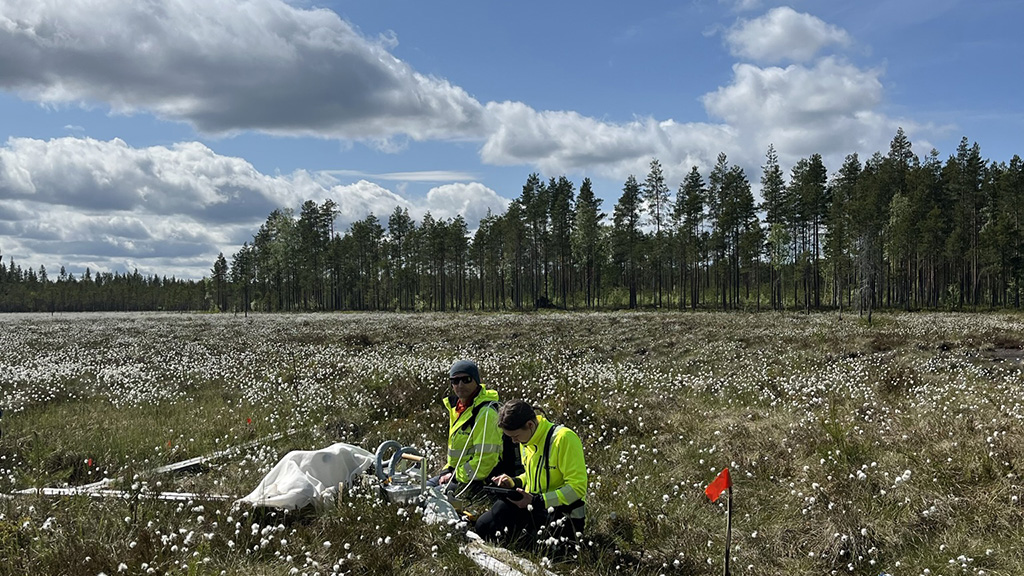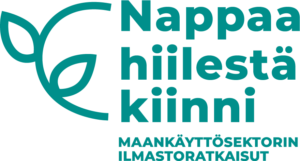Sphagnum Moss Harvesting Could Be a Sustainable Alternative to Horticultural Peat
New research results show that the use of Sphagnum moss as a growing medium can be a sustainable solution in terms of climate and biodiversity. This requires, above all, regulating the water level at the harvesting site and ensuring the regeneration of Sphagnum moss in harvesting areas. The profitability of production in growing media can be improved by selecting areas best suited for harvesting.

The research results show that the environmental impacts of Sphagnum moss harvesting and cultivation depend heavily on the humidity, the development of vegetation and the harvesting methods used at the growing site. The carbon dioxide emissions of wet sites are lower, and their carbon sink is bigger than in dry areas, but at the same time methane emissions may increase, especially as Eriophorum vaginatum spreads to the site.
The climate impacts of Sphagnum moss harvesting and cultivation were assessed by means of a life cycle analysis. The results indicate that, under optimal conditions where Sphagnum regeneration is ensured, the growing medium becomes carbon negative. On the other hand, Sphagnum moss harvested from dry peatlands without regenerative measures may be even worse than horticultural peat in terms of greenhouse gas emissions. Sphagnum cultivation, especially in mires with forest drainage, may reduce greenhouse gas emissions.
The regeneration of Sphagnum requires a systematic approach
Post-harvest regeneration of Sphagnum and the factors affecting it were studied using drone imaging and machine learning. The study found that Sphagnum regenerates in places. This is affected by moisture conditions and the development of vegetation. New Sphagnum was found in places on the harvested surfaces of wet sites, but only on an average of 7% of the surface.
The best way to secure regeneration is to make the water level favourable to Sphagnum and to reintroduce viable Sphagnum moss to harvested surfaces, for example by spreading Sphagnum material.
Economic and environmental impacts of harvesting
Sphagnum moss harvesting may increase the leaching of nutrients and suspended materials into the watercourse, especially when the harvesting area accounts for a large share of the catchment area. More accurate measurements and monitoring are needed to manage the impacts on watercourses, as the results indicate that the risks of leaching depend on the harvesting conditions. Reducing the load on watercourses requires careful planning and comprehensive management of the catchment area.
Sphagnum moss harvesting is a more sustainable option for employment than horticultural peat, but the costs are higher for now. Increasing the efficiency of production, especially developing regeneration measures and machining, would improve the profitability of operations.
Sphagnum is a promising alternative to horticultural peat
A spatial data analysis shows that there are approximately 241,000 hectares of land suitable for Sphagnum moss harvesting in Finland. The potential is the greatest in Ostrobothnia and Kainuu, where the exploitation of mires with forest drainage may offer climate-friendly and economically viable solutions. In addition to the natural state classification, the actual drainage situation should be used in the selection of harvesting sites. This way, harvesting can be targeted at areas where nature values have already deteriorated.
The results of the RahKoo project highlight the potential of Sphagnum as a substitute for horticultural peat. The use of Sphagnum moss as a growing medium may be a sustainable solution in terms of climate and biodiversity, but this requires water level regulation and securing the regeneration of Sphagnum in harvested areas.
Further information
Jukka Turunen, Senior Scientist
jukka.turunen@gtk.fi
tel. 029 503 3318
Tuija Vähäkuopus, Team Manager
tuija.vahakuopus@gtk.fi
tel. 029 503 5224
Climate Wise Sphagnum-Based Growing Media – Possibilities for Sustainable Harvesting (RahKoo) is a project implemented by the Geological Survey of Finland (GTK), Natural Resources Institute Finland (Luke) and the Finnish Environment Institute (Syke). The project started in 2021 and ended in late 2024.
Go to RahKoo project introduction
The RahKoo project’s research report in GTK’s Hakku data service (abstract in English):
Climate Wise Sphagnum-Based Growing Media – Possibilities for Sustainable Harvesting (RahKoo) – final project report (pdf)
Sphagnum moss harvesting sites map service is a geospatial dataset compiled by GTK in which private operators can report the Sphagnum biomass sites they have harvested. The data covers all Sphagnum harvesting sites since 2016.
Sphagnum moss harvesting sites
The RahKoo project is part of the Catch the Carbon climate action programme launched by the Ministry of Agriculture and Forestry in spring 2020. The measures aim to reduce greenhouse gas emissions from agriculture, forestry and other land use and to strengthen carbon sinks and stocks.

